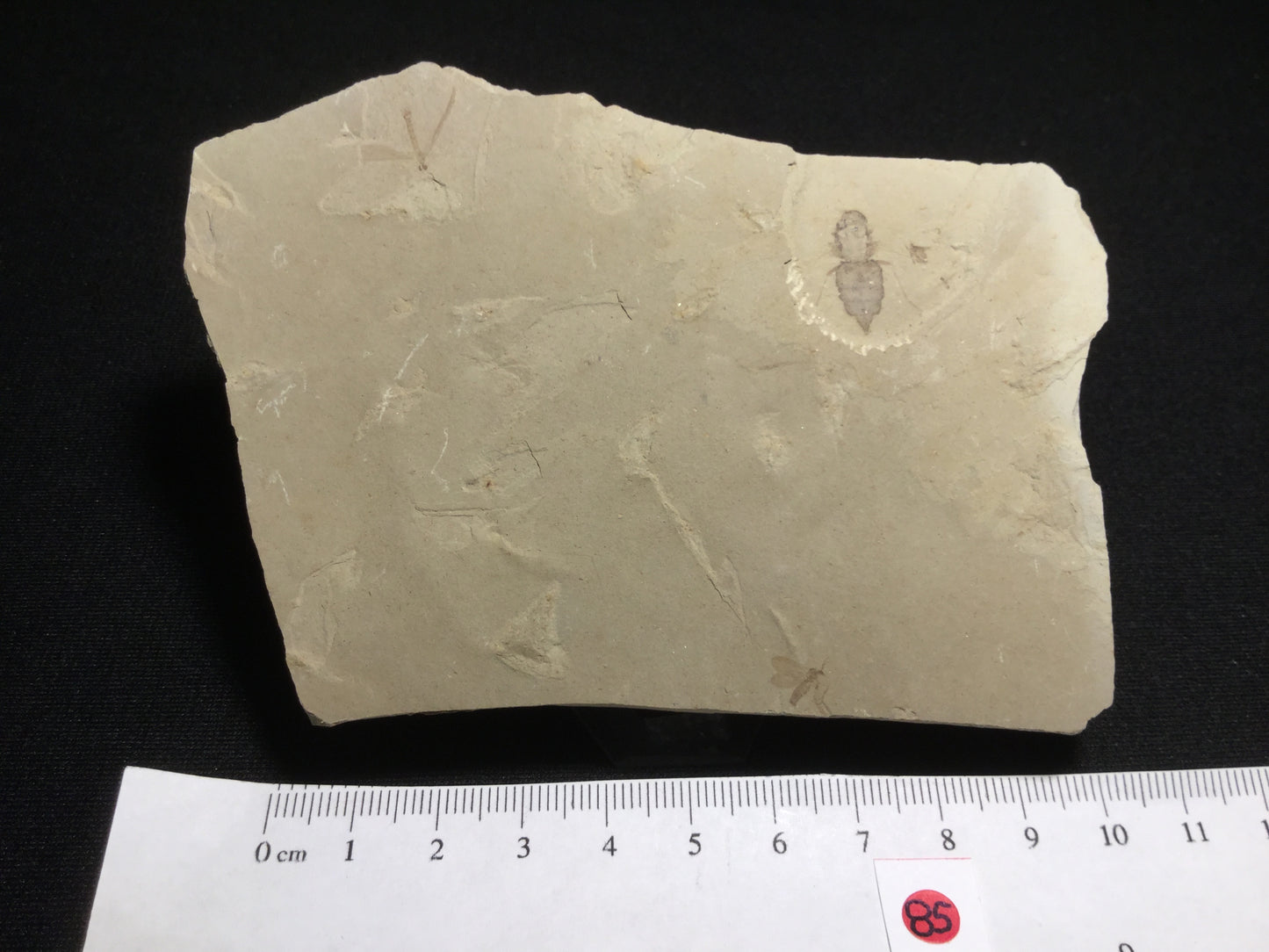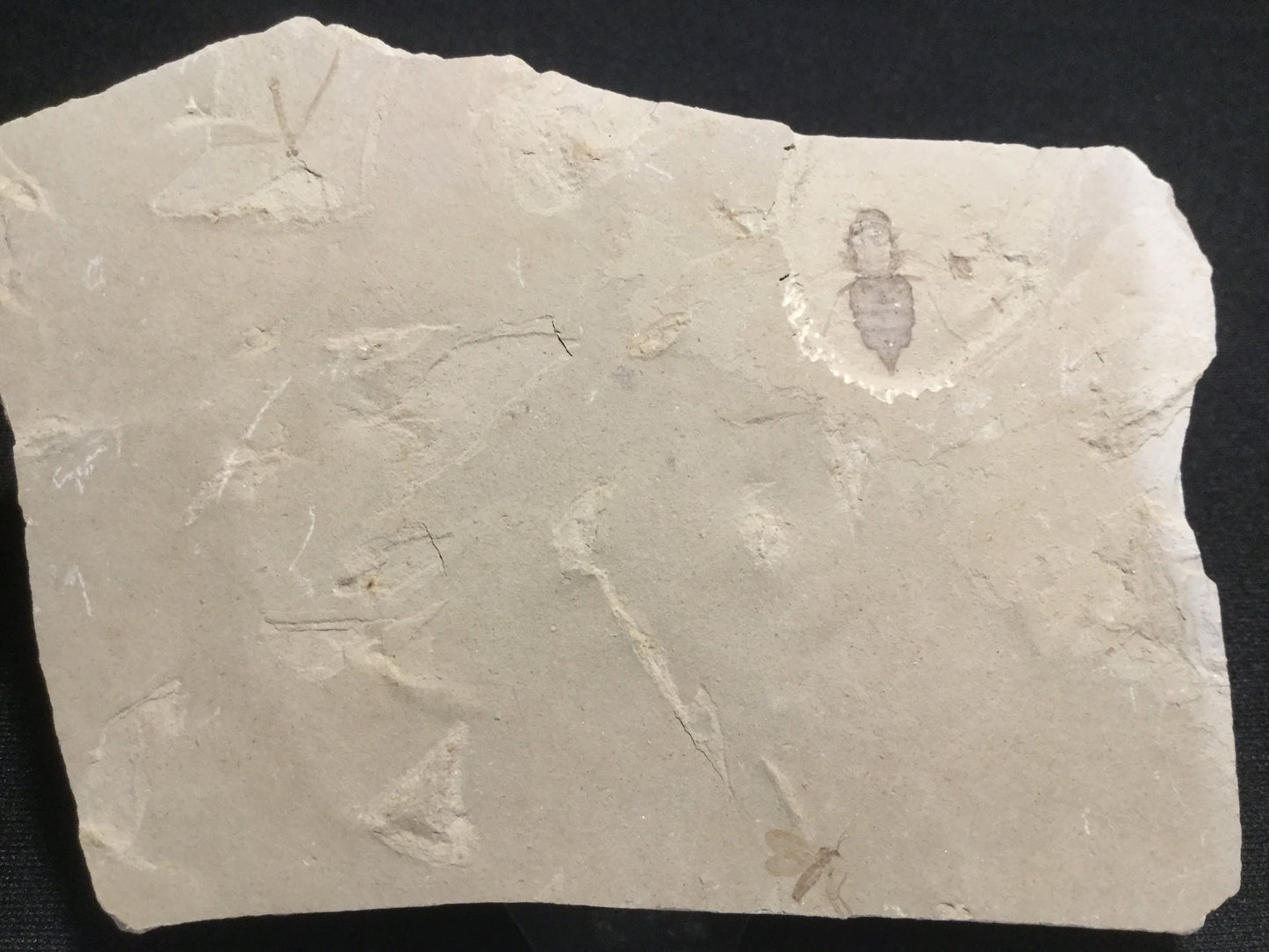All International Orders Must Contact us For Purchase. Click the "Ask A Question" Below to Inquire.
Eocene Green River Multiple Insects IF-PCM-16-085
Eocene Green River Multiple Insects IF-PCM-16-085
Undescribed True Bug (Hemiptera)
Green River Formation
Parachute Creek Member
Middle Eocene
Uintah County, Utah
Here is a very well-preserved undescribed representative of the Order Hemiptera or True Bugs. The entire body has excellent detail and legs are visible. Also on the slab are very good examples of the crane fly Tipula spoliata and the gnat Sackenia sp. This is a very nice assemblage of insects from the Parachute Creek Member.
The Hemiptera or true bugs are an order of insects comprising some 50,000 to 80,000 species of groups such as the cicadas, aphids, planthoppers, leafhoppers, and shield bugs. They range in size from 1 mm (0.04 in) to around 15 cm (6 in) and share a common arrangement of sucking mouthparts.[3] The name "true bugs" is sometimes limited to the suborder Heteroptera. Many insects commonly known as "bugs" belong to other orders; for example, the lovebug is a fly, while the May bug and ladybug are beetles.
Most hemipterans feed on plants, using their sucking and piercing mouthparts to extract plant sap. Some are parasitic while others are predators that feed on other insects or small invertebrates. They live in a wide variety of habitats, generally terrestrial, though some species are adapted to life in or on the surface of fresh water. Hemipterans are hemimetabolous, with young nymphs that somewhat resemble adults. Many aphids are capable of parthenogenesis, producing young from unfertilized eggs; this helps them to reproduce extremely rapidly in favorable conditions.
The upper part of the Green River Formation in the eastern Uinta Basin is present in two stratigraphic intervals separated by approximately 250 m of sandstone, siltstone, marlstone and lacustrine limestone (micrite, boundstone, grainstone). The lower sequence, in the Garden Gulch Member, represents an early lacustrine phase of Lake Uinta and consists of approximately 29 m of interbedded clay-rich oil shale, gastropod grainstone and packstone, ostracode grainstone, algal boundstone and calcareous silty claystone. Fish fossils, plant debris, and pelecypods are locally present. Detrital clay minerals (smectite, chlorite and illite) are common and calcite abundance is greater than dolomite. The second oil-shale interval is located in the upper 10 m of the Parachute Creek Member. The Mahogany ledge crops out in the lower 15 m of this sequence. Oil shale in the Parachute Creek Member is a kerogenous dolomicrite (dolomite greater than calcite). Analcime, quartz, K-feldspar, and albite are also common. Illite is the dominant clay mineral. Fossils include insects, insect larvae, and plant debris. Marlstone and volcanic tuff are interstratified with oil shale.
Couldn't load pickup availability




